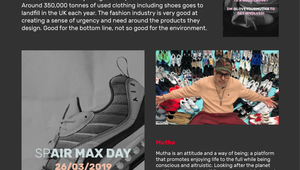
Stuck in SAP? Investment Isn’t Lost

Are you stuck in SAP? You’re not alone, and in fact, many businesses are. SAP Commerce Cloud’s customer base is vast. According to its own admission, SAP customers generate 87% of total global commerce. Businesses have built their eCommerce estates on these monolithic, all-inclusive platforms for many years, but at the same time, their lack of flexibility has stopped such firms from moving forward.
With rising shopper expectations, retailers must become more nimble, leveraging the latest technology to satisfy customers. With consumers increasingly demanding modern, high-quality digital experiences, monolithic applications can struggle to adapt to these demands. For example, they can be difficult to tailor and customise as extensive customisation can make upgrades time-consuming and slow, requiring developers to make adaptations. It also makes scalability difficult because developers have to morph one monolithic architecture into an all-things-for-all-people stack.
In context, the problem with a monolithic platform like SAP, when it’s not approached appropriately, is that it’s potentially fulfilling the role of Content Management System (CMS), storefront, commerce engine, and Product Information Management (PIM) - it’s wearing many hats in the architecture. Imagine you need to change a CSS file on your storefront. With a monolithic architecture, this can often necessitate redeploying the entire platform, risking errors and downtime. Everything depends on one box in your architecture. If that one box goes wrong, nothing works. If you want to change anything, you must change that or redeploy that whole box. With the ever increasing pace of change in the eCommerce world, this is not workable. A more flexible and adaptable architecture is necessary.
Composable Commerce can solve these problems as it extends your ecommerce architecture through a modular approach, integrating best-of-breed applications that deliver specific ecommerce capabilities specific to a business's needs. According to Gartner, by 2024, 80% of CIOs surveyed will list modular business redesign through composability as a top five reason for accelerated business performance.
For businesses, it is no surprise this may stir up some panic. If a brand has relied on a monolithic platform like SAP Commerce Cloud, not only is a shift to composable a potentially disruptive migration, but it also means the investment sunk into it over many years is now redundant. The latter probably strikes fear into CFO’s hearts. But what if it’s still possible to leverage the sunk investment in SAP Commerce Cloud and modernise it in a flexible and agile manner?
There’s no need to hang up the virtual closed sign. With the right strategy, SAP lends itself to composability as it can facilitate being part of a larger, composable ecosystem. The business logic already built in SAP can still be leveraged as a back-end if you decouple and modernise the front-end.
How do you go about this? The best place to start is the front-end. Embarking on a composable journey beginning with the front-end can offer a fast and cost-effective option instead of a complete re-platforming. The best way to transform an existing ecommerce platform is to add a mobile-friendly, high-performing front-end, such as that offered by our technology partner Vue Storefront. This approach can result in a reduced cost of ownership and delivery, leading to profitable outcomes immediately.
One reason technology partners are attractive to companies is that they allow a gradual approach to establishing a composable commerce architecture, which reduces the risk of the entire project by doing it with small proofs of concept. For example, a business can turn on the module for a small amount of time and see how it performs. Does it meet the expectations that were set? Does it work for your businesses? If it does, then great, dive into it. If not, unplug it. The site is still live. Services won’t stop.
As well as de-risking, there is an additional benefit when it comes to resourcing. Good SAP Commerce Cloud developers are tricky to find as it is a vast platform with a lot of functionality to master. It can take multiple years for a developer to be skilled enough to customise it cleanly and effectively. Using front-end-as-a-service allows you to have a different pool of developers with different skill sets who don't need to know anything about SAP Commerce. As a result, there is a much larger pool of resources to work from, as the developer only needs to know one of the many JavaScript frameworks the storefront supports. Considering developers are difficult to come by right now, this is a true boon if a business wants a specialised build.
The key message is that businesses do not need to be chained by their legacy system. Quite the opposite. They can leverage an existing architecture while moving to composable with the right technology partners and expertise. For example, having a front end as a service means small pieces to manage and swap in and out of. It’s a great approach, and considering it’s clear that composable is the future of eCommerce, the business cost is way too high not to test and learn.















